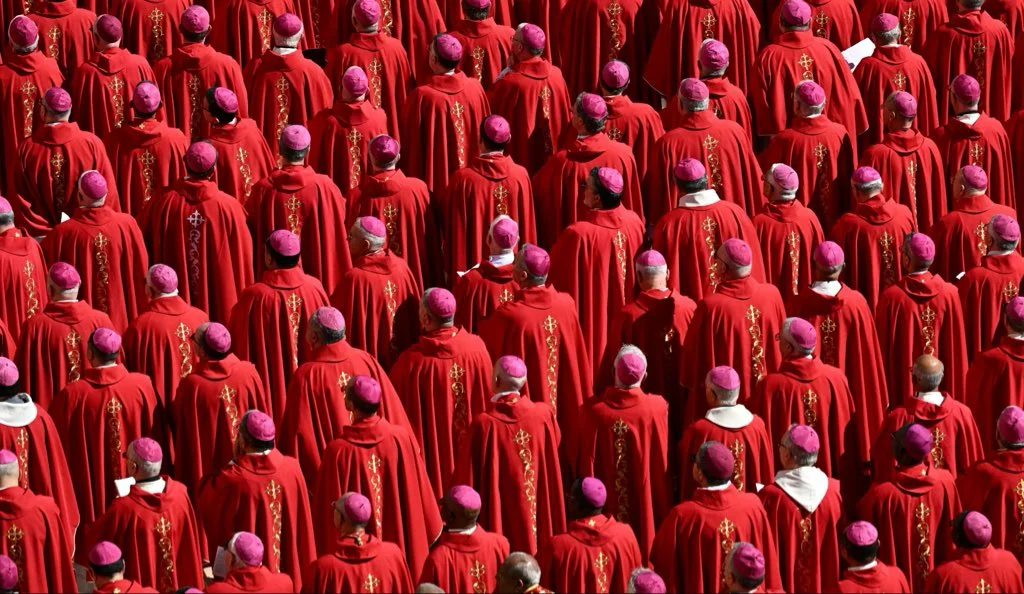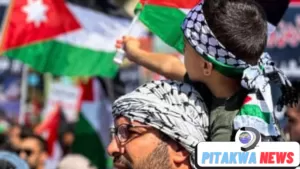Communion During Pope Francis’s Funeral: A Sacred Moment Amid a Global Gathering

On April 26, 2025, St. Peter’s Square became the heart of a global moment of mourning and reverence as the funeral Mass for Pope Francis, the 266th pontiff of the Roman Catholic Church, was celebrated. Presided over by Cardinal Giovanni Battista Re, Dean of the College of Cardinals, the liturgy followed the Ordo Exsequiarum Romani Pontificis, the Church’s official rite for papal funerals. Among the sacred rites performed, the distribution of Holy Communion stood as a profound act of unity, connecting the faithful gathered in Rome—both pilgrims and visitors—with the Eucharistic heart of the Catholic faith. This article explores the role of communion during Pope Francis’s funeral, addressing whether visitors received it and the significance of this moment in the context of such a historic event.
The Funeral Mass: A Liturgical Framework
The funeral Mass for a pope is a meticulously planned liturgy, rooted in centuries of tradition yet adapted to the circumstances of the pontiff’s legacy and the global Church. Pope Francis, known for his humility and emphasis on inclusivity, was honored with a Mass attended by an estimated 250,000 people, including world leaders, clergy, and lay faithful from every corner of the globe. The Ordo Exsequiarum Romani Pontificis outlines the structure of the funeral, which includes the Liturgy of the Word, the Liturgy of the Eucharist, and the Final Commendation and Farewell. Central to the Eucharistic liturgy is the distribution of Holy Communion, a sacrament that signifies the unity of the Church and the faithful’s participation in Christ’s sacrifice.
According to reports from the event, the Mass featured the concelebration of thousands of cardinals, bishops, and priests, who assisted in the distribution of communion to the vast assembly. The scale of the gathering posed logistical challenges, but the Church’s commitment to offering the Eucharist to the faithful remained a priority, as it does in any Mass. One source explicitly noted that “Holy Communion will be distributed to the faithful” during the funeral, underscoring its inclusion in the rite. For the Catholic faithful, this moment was not merely a ritual but a spiritual encounter, binding them to the legacy of Pope Francis and the universal Church.
Did Visitors Receive Communion?
The term “visitors” in the context of the funeral could encompass a wide range of attendees: pilgrims who traveled to Rome specifically for the occasion, tourists present in the city, dignitaries from other faith traditions, or even non-Catholics drawn to witness the historic event. In Catholic teaching, Holy Communion is reserved for baptized Catholics who are in a state of grace, meaning they have confessed any mortal sins and are properly disposed to receive the sacrament. However, in large public Masses, particularly those of global significance like a papal funeral, the enforcement of these guidelines often relies on individuals’ self-regulation rather than strict oversight.
While no source explicitly confirms that “visitors” as a distinct group received communion, the widespread distribution of the Eucharist to the faithful suggests that practicing Catholics among the visitors would have had the opportunity to partake. The presence of thousands of clergy to assist with communion distribution indicates a concerted effort to make the sacrament accessible to the massive crowd, which likely included both local Catholics and international pilgrims. For example, an X post from the day of the funeral highlighted the scale of the operation, noting that clergy were deployed across St. Peter’s Square to ensure the faithful could receive the Eucharist.
Non-Catholic or non-practicing visitors, however, may not have participated, either due to personal choice or awareness of the Church’s guidelines. In some cases, non-Catholics attend such Masses and remain in their seats during communion or approach the priest for a blessing instead. The sources do not indicate any formal restrictions on communion based on nationality, race, or other factors, and one X post explicitly refuted a claim suggesting racial barriers, emphasizing that communion was offered to all eligible faithful. The chaotic organization and heavy security measures mentioned in another post may have influenced the flow of communion distribution, but they did not appear to prevent it from occurring.
The Significance of Communion in This Context
For Catholics, receiving communion during Pope Francis’s funeral was more than a ritual act—it was a moment of spiritual communion with the late pontiff’s mission of mercy, humility, and unity. Pope Francis, born Jorge Mario Bergoglio, was known for his emphasis on the Eucharist as a source of strength for the Church’s mission to serve the poor and marginalized. His funeral Mass, celebrated in the open air of St. Peter’s Square, embodied his vision of a Church that welcomes all, even as it upholds its sacred traditions.
The distribution of communion to such a diverse and global assembly also symbolized the universality of the Catholic Church, a theme central to Francis’s papacy. As heads of state, religious leaders, and ordinary faithful stood side by side, the Eucharist served as a reminder of the Church’s call to transcend borders and divisions. For those who received it, communion was a personal connection to the legacy of a pope who sought to make the Church a “field hospital” for a wounded world.
Logistical and Pastoral Considerations
The sheer scale of the funeral—250,000 attendees, per estimates—presented unique logistical challenges for the distribution of communion. In typical Masses, Eucharistic ministers move through pews or stations to distribute the consecrated hosts, but in an open-air setting with such a large and diverse crowd, the process required careful coordination. The involvement of thousands of clergy, as noted in an X post, was critical to ensuring that communion could be offered efficiently and reverently.
Pastoral considerations also came into play. In large papal events, the Church often balances the desire to make the Eucharist accessible with the need to maintain the sacrament’s dignity. Priests and Eucharistic ministers are trained to distribute communion respectfully, but in a crowd of this size, it’s possible that some non-Catholics or unprepared individuals approached for communion. The Church typically relies on catechesis and announcements to guide attendees, though no specific details about such instructions at the funeral are available in the sources.
Conclusion
The funeral Mass for Pope Francis on April 26, 2025, was a moment of profound spiritual significance, drawing the global Catholic community and beyond to St. Peter’s Square. The distribution of Holy Communion, a central element of the Eucharistic liturgy, was a sacred act that united the faithful in prayer and remembrance. While the sources do not explicitly single out “visitors” as recipients, the widespread offering of communion to the faithful





